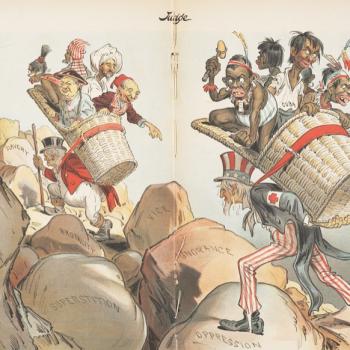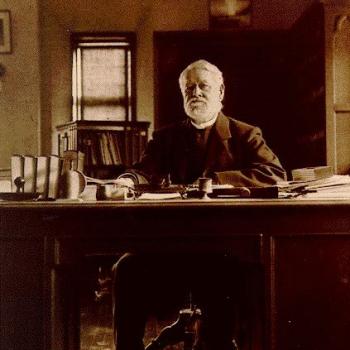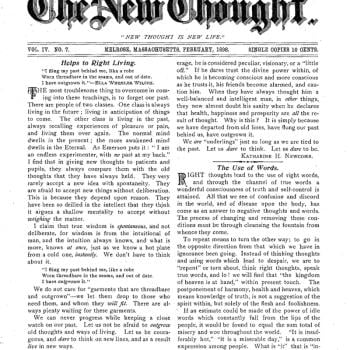I recently described the problems that occur in making and understanding social statistics. Now I want to apply some of these lessons to religious numbers, to understanding (for instance) the rise and fall of particular churches. These comments apply particularly to understanding Christian numbers in the world at large, compared with the other great faiths.
We often read figures that particular churches have X million members. Some of the problems with such statistics are obvious enough, especially the idea that churches always try to over-claim members in an effort to make themselves look as successful as possible. You even hear comments that religious data are especially soft or dubious, although distinguished scholars like Todd Johnson and Roger Finke make an excellent case for the value of religion-related numbers, when properly understood and studied.
To return to the questions I identified last time, the issues to be addressed when looking at any figures:
Who is doing the counting?
What are they counting?
Are those agencies or groups in a position to observe and assess reality?
Do they have motives to interpret the stats in particular ways?
What can the raw numbers tell us about attitudes or behaviors?
In the church example I mentioned earlier, the “Who” question is vital. If you are lucky enough to have any kind of religious census, churches themselves often report their numbers, and of course they count different things (the “What”). Some count active members, variously defined. Some count communicants, in churches where Communion is a key institution. Some give a more general statement of adherents, variously defined.
Sometimes, churches change their criteria for counting members, and that alteration might add or remove many thousands from the rolls. An unwary observer might conclude that such a change represented a surge or collapse in actual membership, rather than a statistical artifact.
I often deal with African churches where numbers are at best a guesstimate – not because of any deception or dishonesty, but because nobody is doing any plausible counting. Semi-seriously, I occasionally say that all rising African churches have five (or six) million members. Nobody knows.
Some churches are conscientious about counting active members or followers, while others include everyone who has ever been on the books. Globally – not in the US – many countries apply a kind of default principle, so that religious organizations claim as members everyone in a country who has not specifically opted for some other choice. For many years, such a principle worked for the Church of England, and in many Catholic countries. You can correct for these over-claims by survey evidence.
Those default claims are a particular problem in Islamic countries, where the assumption is that all residents all Muslim, regardless of degree of practice, if they have not opted publicly for some other minority faith. Egypt, for instance, according to the CIA Factbook, is “Muslim (predominantly Sunni) 90%, Christian (majority Coptic Orthodox, other Christians include Armenian Apostolic, Catholic, Maronite, Orthodox, and Anglican) 10%.” Note that nobody in such statistics is allowed to be non-religious, or a radical atheist, or even a None – someone of Muslim background, shall we say, whose degree of religious involvement and participation is zero. Interrogating those figures is difficult in a society where expressing any doubts about religious loyalty might be very dangerous.
Running through this discussion is the concept of the cultural Muslim, which is a really valuable concept. I quote: “Cultural Muslims are religiously unobservant, secular or irreligious individuals who still identify with the Muslim culture or the religion due to family background, personal experiences, or the social and cultural environment in which they grew up.” When asked by a survey, like the excellent Pew studies, these individuals reply that they are Muslims, and count thus in the statistics, in a way that non-religious Christians generally don’t.
I actually explored these issues about Christian and Islamic numbers not long ago in a column about religion in Europe. Once again, issues of definition are crucial, as are the attitudes of the people doing the counting. To over-simplify, European authorities tend to identify Christians by positive religious loyalty, while using Muslim as an ethnic/cultural label tenuously connected to faith or practice. So why not count everyone who celebrates Christmas as a “Cultural Christian,” to parallel Cultural Muslims? (That is NOT a serious suggestion).
It is essential to recall those underlying factors whenever we see claims that there are X billion Muslims in the world. If we are going to use those Islamic numbers, then logically we need to look at majority Christian countries and add everyone there who has not positively identified for some other faith. In the United States, we might count everyone as a Christian if they have not positively identified as Jews, Muslims, or members of other faiths. If we did that in North America and Europe, and I don’t advocate it for a second, that would increase the world’s Christian population by several hundred million overnight.
Let’s compare like with like.
These problems are all reasonably well known, but there are a couple of specific issues. We commonly tend to assume that religious statistic will over-claim, but that is not necessarily true. The fact that African statistics are inaccurate does not necessarily mean that they are exaggerations. If we look at Catholic numbers in Africa, the growth figures are staggering enough, but the survey evidence suggests that these are under-estimates. Some surveys suggest that African Catholics are under-estimating their adherence by around twenty percent.
But in some instances, governments deliberately under-count religious believers, either because the regimes are systematically anti-religious, or because they are exaggerating the power of a dominant faith. If you want to see these various issues and problems combined, look at the nation of India. Because it is so vast – over 1.3 billion people, and growing fast – any claims about religious numbers are critical for assessing the strength of faiths worldwide.
For what it is worth, the CIA Factbook gives these estimates as of 2011: “Hindu 79.8%, Muslim 14.2%, Christian 2.3%, Sikh 1.7%, other and unspecified 2%.” Well, that sounds precise, does it not, with the decimal places? The problem is that Indian census figures and religious estimates have always had a notoriously strong Hindu emphasis, which has grown immensely in recent years under that country’s radical nationalist government (“radical nationalist” is the politest term I will use here). Census takers have long pushed lower-class or underclass respondents to opt for Hinduism as a choice, often refusing to allow them to cite Islam or Christianity, or to choose some unapproved labels, such as Buddhism. As Buddhists have a special appeal to Dalits, they are especially likely not to be counted.
Official census figures also point to a gradual decline in Christian numbers over the past few decades, running flat contrary to all observations on the ground. A plausible figure for Christian numbers would be some 3 – 3.5 percent, or 40-45 million people, not the 30 million indicated by the census.
In religious terms, India’s census figures are a notable work of imaginative fiction.
Realistically, an honest estimate would push up India’s Muslim numbers considerably, Christian numbers somewhat, and other minorities quite a bit. And all this in a society where adding a single percentage point would raise estimates of any given faith by 13 million adherents. Nor does the default Hindu category say anything whatever about actual faith, commitment or practice.
But I return to a basic point. When we talk about different faiths worldwide, we should not compare default estimates for Muslims and Hindus with Christian numbers that assume conscious membership and participation. Always compare like with like.
For a critical view of the making of US religious statistics, see especially Robert Wuthnow, Inventing American Religion: Polls, Surveys, and the Tenuous Quest for a Nation’s Faith (Oxford University Press 2015).












